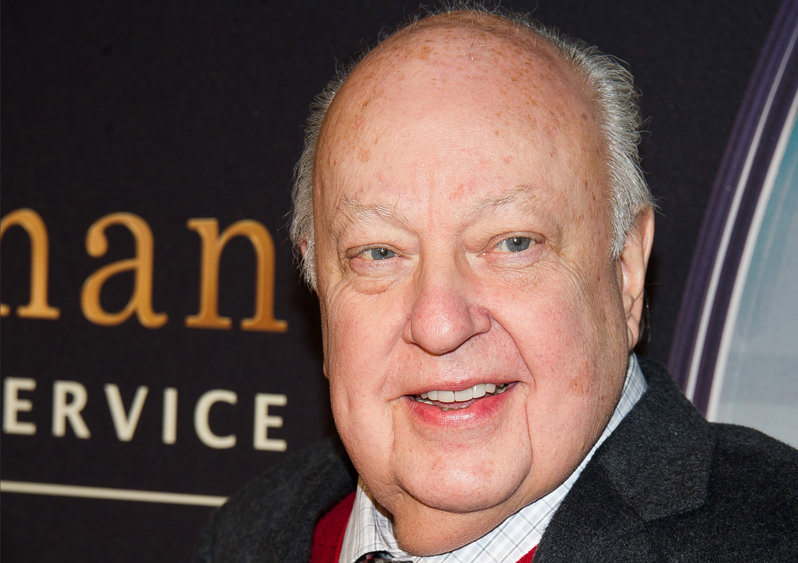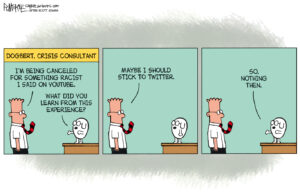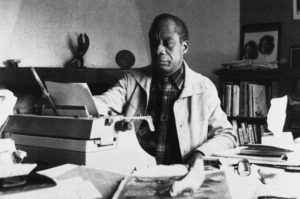Roger Ailes, Architect of Conservative TV Juggernaut Fox News, Is Dead at 77
To Democrats and liberals, he was a manipulator of the news who used his network to turn minor stories into scandals, ostensibly in service of his personal politics. Roger Ailes. (Charles Sykes / Invision /AP)
Roger Ailes. (Charles Sykes / Invision /AP)
By Marc Fisher / Washington Post
Roger Ailes. (Charles Sykes / Invision /AP)
Roger Ailes, who mastered the art of selling political candidates like Hollywood celebrities and was the architect of conservative-oriented TV news, has died at 77.
Fox News reported the death, citing a statement from his family. No further details were reported.
As chairman and chief executive of the Fox News Channel, Ailes presided over a cable outlet that combined news from a conservative perspective with the rabble-rousing of right-wing talk radio to produce a singularly influential media machine. He was a skilled showman, a savvy political operator and a proudly plebian counterpoint to the East Coast elite that he believed dominated the news business.
To Democrats and liberals, he was a manipulator of the news, a puppetmaster who used his network to turn minor stories into blazing scandals, ostensibly in service of his personal politics.
To Republicans and conservatives, he was an essential counterweight, a tough but fair partisan, a middle American from a blue-collar background who gleefully and effectively poked holes in the left-leaning biases of the news media establishment.
The titles of biographies about him – four were published within seven years at a peak in Fox’s popularity during the Obama administration – demonstrated the wrath and resentment he could engender: He was a “Dark Genius,” “The Loudest Voice in the Room,” ruler of a “propaganda machine.”
Ailes eschewed political labels and preferred to portray himself as a craftsman of the airwaves, more concerned about how to frame a shot or drive a story than about the fate of individual candidates or policies. He told a biographer that his dream for America was that it be allowed to return to its best self, which he put in the Midwest in about 1955.
As founding chief executive of Fox News in 1996, Ailes defined the channel in opposition to the traditional journalism of CNN and the liberal bent of MSNBC, and he brought Fox from a distant third to clear dominance, riding to the top along the wave of public dismay that arose over President Bill Clinton’s affair with a White House intern.
Ailes’ reign at Fox ended abruptly in 2016, in the middle of the presidential campaign, after an on-air host at Fox News, Gretchen Carlson, alleged that Ailes had sabotaged her career when she refused to have sex with him. Following Carlson’s accusations, 25 other women, including Fox’s most prominent female anchor, Megyn Kelly, came forward to say that Ailes had sexually harassed them over his five decades in the TV business.
Fox’s parent company quickly pushed Ailes to resign his positions, though he said the allegations – which ranged from kissing women against their will to telling women that they had to provide him with sexual favors if they wanted their careers to flourish – were false. Ailes’ bosses, Lachlan and James Murdoch, the sons of Fox’s longtime owner, Rupert Murdoch, announced the resignation in a statement that emphasized the company’s “commitment to maintaining a work environment based on trust and respect.”
Fox paid Carlson $20 million to settle her harassment claim against Ailes. Within weeks, Ohio University removed Ailes’ name from the newsroom it had named after one of its most famous alumni; the university also returned to Ailes a $500,000 gift he had made to his alma mater. Less than a month after he left Fox, Ailes reemerged as leader of the prep camp where businessman and Republican presidential nominee Donald Trump prepared for his TV debates against former Secretary of State Hillary Clinton, the Democratic nominee.
Like Richard M. Nixon, the first presidential candidate Ailes ever worked with, he seemed driven as much by social and class resentments as by ideology or a lust for power.
He was an employee of Rupert Murdoch, the worldwide media tycoon, but wielded power on his own, too, regularly being courted by Republican presidential candidates.
“At Fox, Ailes has ushered in the era of post-truth politics,” concluded David Brock, a conservative-turned-liberal activist who wrote a book on Ailes, “The Fox Effect.” “The facts no longer matter, only what is politically expedient, sensationalistic, and designed to confirm the preexisting opinions of a large audience.”
Fox gave intensive coverage to stories that later collapsed under closer inspection: the idea that Barack Obama, the first black U.S. president, was born outside the United States; or that Obama’s health reform initiative would impose death panels to determine which Americans might be refused medical care; or that human behavior played no role in global climate change. Many Democrats dismissed Ailes’ network as a partisan agitator.
“Fox News often operates as either the research arm or the communications arm of the Republican Party,” Anita Dunn, communications director in the Obama White House, told CNN in 2009.Critics and admirers alike agreed that Fox was a mirror of Ailes’ ideas about content and presentation. “Roger Ailes is not on the air, Roger Ailes does not ever show up on camera, and yet everybody who does is a reflection of him,” radio talk host Rush Limbaugh, whose TV show Ailes produced in the early 1990s, once said.
Ailes often responded to his critics by saying that they intentionally elided Fox’s straight-ahead news reporting with the frankly conservative views of its commentators. He noted that the network regularly broke stories critical of leading conservatives, including George W. Bush’s arrest as a young man for drunk driving, a story that Fox reported the week before the 2000 election, when Bush won his first term as president.
Ailes, derided on the left as a Republican kingmaker, was actually more of “an entertainer,” New Yorker writer and Harvard historian Jill Lepore wrote. “He’s also a bogeyman,” an easy target for those who want to believe that the conservative movement was manipulated from above rather than a naturally occurring political phenomenon.
Several academic studies of Fox’s content concluded that the network, as the Project for Excellence in Journalism put it in 2006, “was measurably more one-sided than the other networks, and Fox journalists were more opinionated on the air.” But a study in 2007 by the Center for Media and Public Affairs, a media watchdog nonprofit that calls itself nonpartisan, but which some liberal groups consider conservative in orientation, found that Fox News’ statements about Republican and Democratic presidential candidates were almost exactly evenly divided between positive and negative.
Nevertheless, Ailes and his approach to broadcasting provoked a longstanding and deep rift within the Murdoch clan over the politics and direction of Fox.
In 2010, Murdoch’s then-son-in-law, Matthew Freud, a London public relations executive who did not work for the family media empire, denounced Ailes’ leadership of Fox News, saying that “I am by no means alone within the family or the company in being ashamed and sickened by Roger Ailes’ horrendous and sustained disregard of the journalistic standards that News Corporation, its founder and every other global media business aspires to.” But Murdoch stood by his man, giving him larger responsibilities and free rein to shape the hugely successful network.
Roger Eugene Ailes was born in Warren, Ohio, on May 15, 1940, and was the middle child son of a physically abusive father, who worked as a supervisor at an automobile plant, and a demanding but emotionally withholding mother.
His father, according to a story that biographers called Ailes’ “Rosebud” moment, once urged young Roger to jump from the top of his bunk bed into his father’s open arms. But as the boy leapt, the father stepped away and Roger landed hard.
“Don’t ever trust anybody,” Robert Ailes told his son.
The young Ailes suffered from hemophilia and was often picked on and beaten by bullies. He was 9 when his father told him, “The worst thing that can happen to you is you can die. If you’re not afraid of that, you don’t have to be afraid of anything.”
Ailes traced his passion for show business to his time as an actor in high school theater and to his devotion to his college radio station. In 1962, straight out of Ohio University, Ailes got a job at “The Mike Douglas Show,” a TV talk show then based in Cleveland and that within a few years became one of the country’s most popular programs. Ailes moved up quickly, becoming the executive producer. In 1967, Nixon, preparing to run for president, met Ailes while he was waiting to appear on the Douglas show.
“It’s a shame a man has to use gimmicks like this to get elected,” Nixon told the producer, according to journalist Joe McGinniss’ book, “The Selling of the President 1968,” a landmark account of modern media packaging on the political campaign.
“Television is not a gimmick,” Ailes replied. Impressed, Nixon told an aide to hire the producer. Ailes was charged with creating one-hour, live, campaign-sponsored programs called “The Man in the Arena,” featuring the candidate responding to questions from voters.
Nixon, no friend of the TV camera, quickly came to appreciate Ailes’ attention to the kind of theatrical detail that more traditional political advisers didn’t notice. When Ailes saw that the set for the campaign program included turquoise curtains as a background, he ordered them replaced with plain wooden panels – a look he said would create “clean, solid, masculine lines.”
Ailes became a core member of the team that packaged Nixon, applying the tools of Madison Avenue and Hollywood to a presidential campaign for the first time. Ailes advised Nixon to use more “memorable phrases,” maintain “a fairly constant level of healthy tan,” and stop saying “Let me make one thing very clear” so often.
The young producer believed he could overcome the public’s view of Nixon as cold and distant by showing that he could handle tough situations. “Let’s face it, a lot of people think Nixon is dull,” Ailes told McGinniss. “They figure other people got footballs for Christmas, Nixon got a briefcase and he loved it. . . . That’s why these shows are important. To make them forget all that.”
Ailes sensed that the campaign’s emphasis on production values was “the beginning of a whole new concept,” he told McGinniss. “This is the way they’ll be elected forevermore. The next guys up will have to be performers.”
Though the Nixon White House occasionally called upon Ailes to stage important events, such as the announcement that U.S. troops would begin withdrawing from Vietnam, Ailes turned his energy toward advising campaigns, even as he kept his hand in the more theatrical end of the media, producing a rock musical on Broadway and a late-night talk show on NBC. In 1975, he ran Television News Inc., a short-lived TV news service funded by conservative brewery owner Joseph Coors Sr. that some of Ailes’ colleagues would later see as the inspiration for Fox News.
In 1984, he coached President Ronald Reagan after Democratic challenger Walter F. Mondale, the former vice president, had done well in their first debate; Ailes advised Reagan to respond to Mondale’s inevitable questioning of the president’s advanced age with a Reagan line that would become an iconic moment in TV debate history: “I will not make age an issue of this campaign. I am not going to exploit for political purposes my opponent’s youth and inexperience.”
As time went on, Ailes became known in his field as “the dark prince of negative advertising,” producing commercials, such as one attacking Massachusetts Gov. Michael S. Dukakis, the Democratic candidate for president in 1988, for giving “weekend furloughs to first-degree murderers.” The spot was credited with helping George H.W. Bush prevail in that election. Bush’s campaign manager, Lee Atwater, said that year that Ailes “has two speeds: attack and destroy.”
In “You Are the Message,” a book he wrote in 1988 with Jon Kraushar, Ailes said the most important factor in winning elections was to be the more likeable candidate. In everyday life, too, he said, “the like factor” is pivotal, and he advised readers that in any personal encounter, they had seven seconds to establish that they are likeable.
In the 1990s, Ailes moved from political consulting to TV news. He told a reporter in 1994 that he hadn’t stayed in politics “because I wanted conservatives to run the world. Actually, it was the money.”
But TV was something altogether more potent: “This is the most powerful force in the world,” he said. “Politics is nothing compared to this.” (In 2012, the last year for which Fox disclosed Ailes’ pay, his total compensation was $21 million. Fox News’ profit that year was estimated at $1 billion.)
He produced a TV show for Limbaugh, then in 1994 created a cable talk channel for NBC called America’s Talking, which featured shows called “Pork,” about waste in government, “Bugged!” about things that annoy people, “Am I Nuts?” starring a psychologist, and his own talk program, “Straight Forward.” The channel lasted only two years, but one of its signature programs, “Politics with Chris Matthews,” remained a cable mainstay for decades under the title “Hardball.”
Along the way, NBC chastized Ailes for his overbearing and insulting approach to coworkers; a network investigation said that Ailes had “a history of abusive, offensive, and intimidating statements/threats and personal attacks.”
At NBC, Ailes signed an agreement pledging not to call staffers names. In later years, he showed little compunction about bashing politicians and news people. He told his biographer Zev Chafets that Vice President Joe Biden was “dumb as an ashtray” and that former House speaker Newt Gingrich, R-Ga., was “a (expletive).”
In 1996, Murdoch – who concluded when he first met Ailes that “Either this man is crazy or he has the biggest set of b– I’ve ever seen” – asked him to launch a conservative alternative to CNN. But Fox News Channel would not tout itself as conservative because, as Ailes said, “if you come out and you try to do right-wing news, you’re gonna die. You can’t get away with it.”
Instead, Ailes proposed to build a “fair and balanced” news operation in which reporting would blend with largely conservative talk show hosts.
Fox News Channel, an outgrowth of Fox TV, which Murdoch built into a fourth broadcast network by buying six TV stations from Metromedia in 1985, started with access to only 17 million cable subscribers; by 2015, it was in 87 million households.
The channel’s first big break came with the Monica Lewinsky scandal, the 1998 story about then-President Bill Clinton’s extramarital affair. Fox’s coverage brought the network a fourfold increase in ratings.
From its blizzard of on-screen alerts to its tabloid-style graphics and unending parade of blonde bombshell newscasters, Fox News changed the face of TV news. The channel wrapped itself in patriotism. Fox added an American flag to its logo immediately after the Sept. 11, 2001, terrorist attacks. By January 2002, Fox had passed CNN in the ratings, a reversal that would persist for more than a decade.
A few days after the 9/11 attacks, Ailes, who often said that he had left political consulting behind to devote himself to impartial news coverage, sent a memo to President George W. Bush’s political adviser, Karl Rove (later a Fox News commentator), saying that the American people would wait patiently for a response to the attacks, but only if they knew Bush would use the harshest possible measures.
Ailes said the memo was not meant as political advice, but as a nonpartisan expression of support for the president. “I did not give up my American citizenship to take this job,” he said.
Fox’s popularity and influence in setting the agenda for conservative politicians and voters grew with each election cycle. The network and its viewers started to talk about “Fox Nation,” a like-minded audience that closely followed the channel’s intensive focus on scandals and outrages involving liberal politicians.
By the 2012 campaign, candidates in the Republican primaries were choosing to appear almost exclusively on Fox, racking up more than 600 appearances on Fox News and its sister channel, Fox Business, while making only scant visits to other cable news channels.
Republican candidates repeatedly argued that Fox had a powerful influence on which candidates rose or fell. At the same time, GOP candidates often complained that Fox anchors were overly aggressive in their questioning of Republican hopefuls.
When a Fox News executive asked Ailes whehter he was damaging the GOP by pumping up conflicts among the party’s presidential candidates, he replied that an intra-party battle was a good way to build the next Reagan. “If there’s a fight, we should be the one doing the shooting,” he said, according to journalist Gabriel Sherman’s 2014 book, “The Loudest Voice in the Room.”
Ailes’ first two marriages, to Marjorie White and Norma Ferrer, ended in divorce. He is survived by his third wife, the former Elizabeth Tilson, the publisher of two weekly newspapers in Putnam County, N.Y., the family’s home, and their son, Zachary. A complete list of survivors was not immediately available.
In a memory box that Ailes created for Zachary to open after he died, the father left his child a pocket edition of the U.S. Constitution, biographies of Ronald Reagan, articles about Ailes’ career, $2,000 in cash (“the allowance I owe you,” Ailes wrote), and a copy of Sun Tzu’s “The Art of War,” inscribed with this advice: “Always stand for what is right. If absolutely forced to fight, then fight with courage and win. Don’t try to win . . . win! Love, Dad.”
Your support matters…Independent journalism is under threat and overshadowed by heavily funded mainstream media.
You can help level the playing field. Become a member.
Your tax-deductible contribution keeps us digging beneath the headlines to give you thought-provoking, investigative reporting and analysis that unearths what's really happening- without compromise.
Give today to support our courageous, independent journalists.








You need to be a supporter to comment.
There are currently no responses to this article.
Be the first to respond.